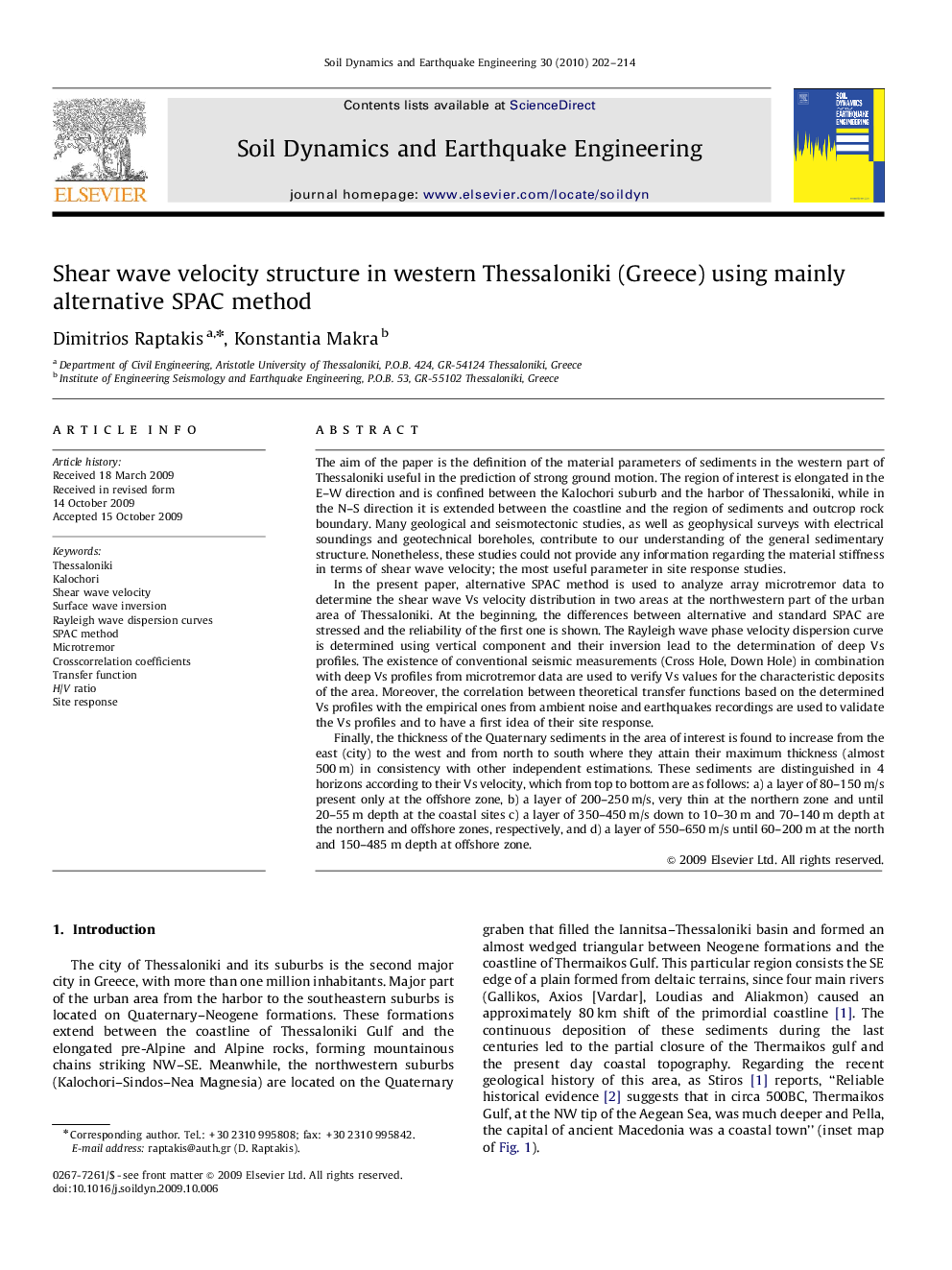| کد مقاله | کد نشریه | سال انتشار | مقاله انگلیسی | نسخه تمام متن |
|---|---|---|---|---|
| 304735 | 512824 | 2010 | 13 صفحه PDF | دانلود رایگان |

The aim of the paper is the definition of the material parameters of sediments in the western part of Thessaloniki useful in the prediction of strong ground motion. The region of interest is elongated in the E–W direction and is confined between the Kalochori suburb and the harbor of Thessaloniki, while in the N–S direction it is extended between the coastline and the region of sediments and outcrop rock boundary. Many geological and seismotectonic studies, as well as geophysical surveys with electrical soundings and geotechnical boreholes, contribute to our understanding of the general sedimentary structure. Nonetheless, these studies could not provide any information regarding the material stiffness in terms of shear wave velocity; the most useful parameter in site response studies.In the present paper, alternative SPAC method is used to analyze array microtremor data to determine the shear wave Vs velocity distribution in two areas at the northwestern part of the urban area of Thessaloniki. At the beginning, the differences between alternative and standard SPAC are stressed and the reliability of the first one is shown. The Rayleigh wave phase velocity dispersion curve is determined using vertical component and their inversion lead to the determination of deep Vs profiles. The existence of conventional seismic measurements (Cross Hole, Down Hole) in combination with deep Vs profiles from microtremor data are used to verify Vs values for the characteristic deposits of the area. Moreover, the correlation between theoretical transfer functions based on the determined Vs profiles with the empirical ones from ambient noise and earthquakes recordings are used to validate the Vs profiles and to have a first idea of their site response.Finally, the thickness of the Quaternary sediments in the area of interest is found to increase from the east (city) to the west and from north to south where they attain their maximum thickness (almost 500 m) in consistency with other independent estimations. These sediments are distinguished in 4 horizons according to their Vs velocity, which from top to bottom are as follows: a) a layer of 80–150 m/s present only at the offshore zone, b) a layer of 200–250 m/s, very thin at the northern zone and until 20–55 m depth at the coastal sites c) a layer of 350–450 m/s down to 10–30 m and 70–140 m depth at the northern and offshore zones, respectively, and d) a layer of 550–650 m/s until 60–200 m at the north and 150–485 m depth at offshore zone.
Journal: Soil Dynamics and Earthquake Engineering - Volume 30, Issue 4, April 2010, Pages 202–214